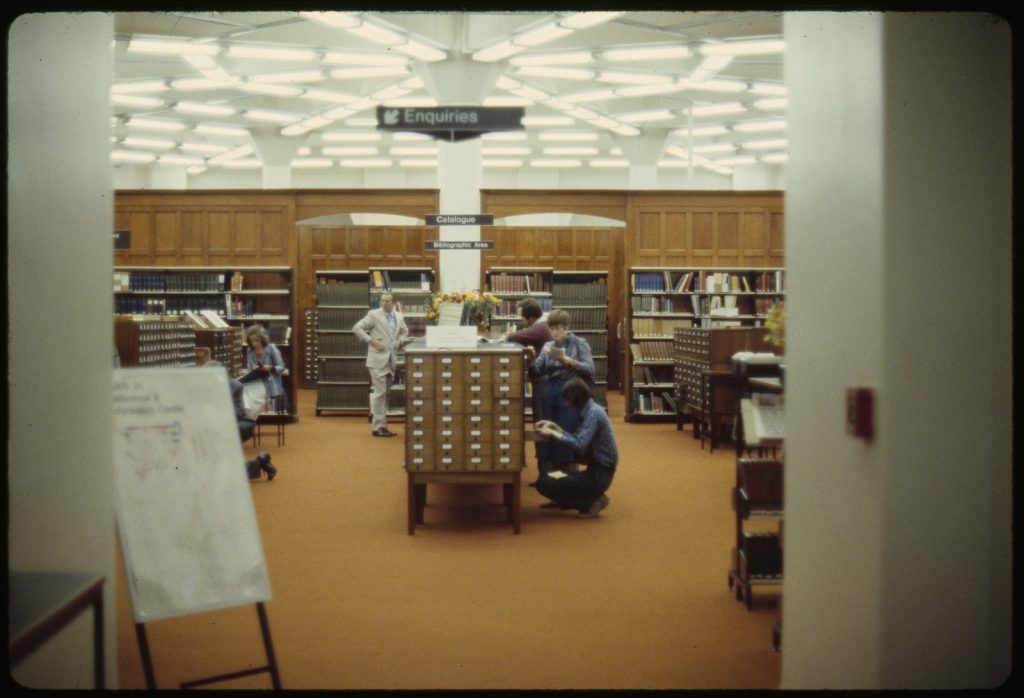
Hard to read, seemingly arbitarily organised, and a little old and dusty, the Melbourne newspaper card index may be one of the most interesting collections of materials in the State Library Victoria. The index cards list thousands of articles from the major Melbourne daily newspapers over decades and are a unique (albeit tricky to use) research tool that holds information and data you can’t find elsewhere.
Newspapers have always been a wellspring of useful information and data for researchers. A great way to learn more about online and hardcopy newspapers at the Library is to check our research guides titled How to find newspapers and How to find items in newspapers.
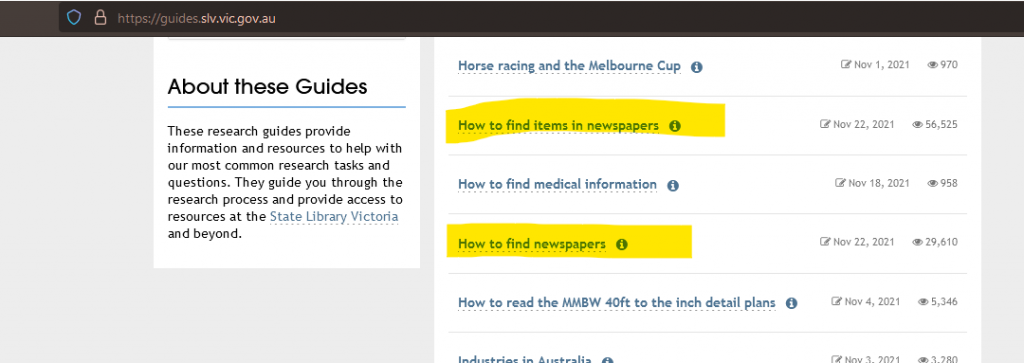
Digitised newspapers (old and new)
The wonders of digital technology have allowed many newspapers to be reproduced online, with full text searching revealing valuable nuggets of information and data.
The best Australian example of digitally-reproduced historical newspapers is the Trove Digitised Newspaper database, where various libraries around Australia have combined their efforts to make millions of newspaper pages freely available and searchable. Most of this freely available material extends from the early 1800s up to the mid 1950s (including the Melbourne major newspapers, though The Sun (Melbourne edition from 1928) is yet to be digitised).
More recent newspapers (from the early 1990s to present day) from Melbourne and Australia have some level of digitisation and searchability on subscription databases. State Library Victoria subscribes to several newspaper databases, which can be accessed onsite or from home for Victorian resident Library members.
Mind the gap
It can be difficult to search for items in newspapers published in the gap between the freely accessible Trove and the subscription databases (the gap being from the mid 1950s to the early 1990s).
The Melbourne daily newspapers published from the mid 1950s to the early 1990s are easy to access at the State Library Victoria in microfilm format, but ask yourself this – what do you do if the information and data you need are in a Melbourne newspaper from 1962, but you aren’t sure of the actual date? Searching through a year of microfilmed newspapers for an article is very time consuming and unrewarding (trust me, I’ve tried!).
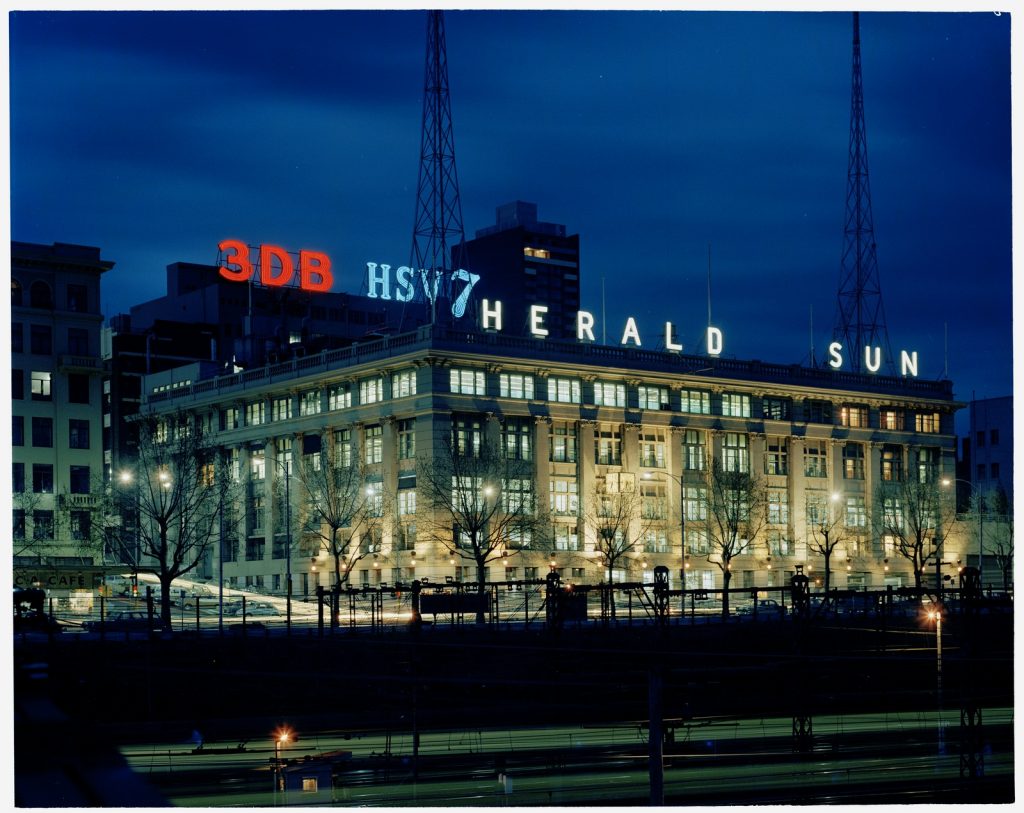
State Library Victoria has respite at hand for the hardy researcher willing to explore the wild and woolly newspaper card indexes. Major Melbourne metropolitan papers The Herald, The Sun, and The Age all have card indexes held by the Library. The Sun and The Herald paper card indexes cover the period between the late 1920s to the early 1970s, whilst The Age card index is held between 1960-1972, with the 1980s into the 1990s viewable on microfiche. All of these indexes are on open access in the Newspapers and Family History Reading Rooms at State Library Victoria.
Librarians and journalists working at the newspapers
The newspaper index cards were created by librarians who worked at the newspapers. This was done so that reporters from the newspaper could, with the assistance of their librarians, access other stories that had been written by their newspaper on a subject. Most reporters had no time to do in-depth research, so the card catalogues were a quick go-to to provide information to help journalists write factually correct articles.

The newspaper index cards were often used in conjunction with extensive newspaper clippings files. These files were stored by subject and by author. Used together, these items allowed librarians to fact check for the journalists or (during quiet times) allow the journalists themselves to visit the library to browse a topic and chat to the librarians.
The newspaper files could come in very handy. Angela O’Connor, a young cadet journalist of the 1950s and 60s, recalled when she was working on a Saturday afternoon and was summoned by the newspaper editor to interview a well-known visiting American economist. Angela had no idea who the economist in question was, so she checked in at the newspaper’s library to grab a recent clipping about the economist. Reading the article on the way to the meeting, she was able to learn about this economist (JK Galbraith) and hold a successful interview. (A O’Connor 2021, pers. comm. 3 June).
As time passed the creation of card indexes and the clippings files for The Herald and The Sun were discontinued, with the State Library Victoria gladly accepting a donation of the card files in 1995.
The Library does not hold the clippings files, but the index cards link to articles that can be found in the Library’s microfilmed collection of newspapers.
Using the cards
The card indexes list articles in the papers with page numbers and dates. The cards are organised by subject heading, personality (if the person was a well-known public figure) and author byline. The cards display the date and a page number, as well as an article title (or at least a description of the article).
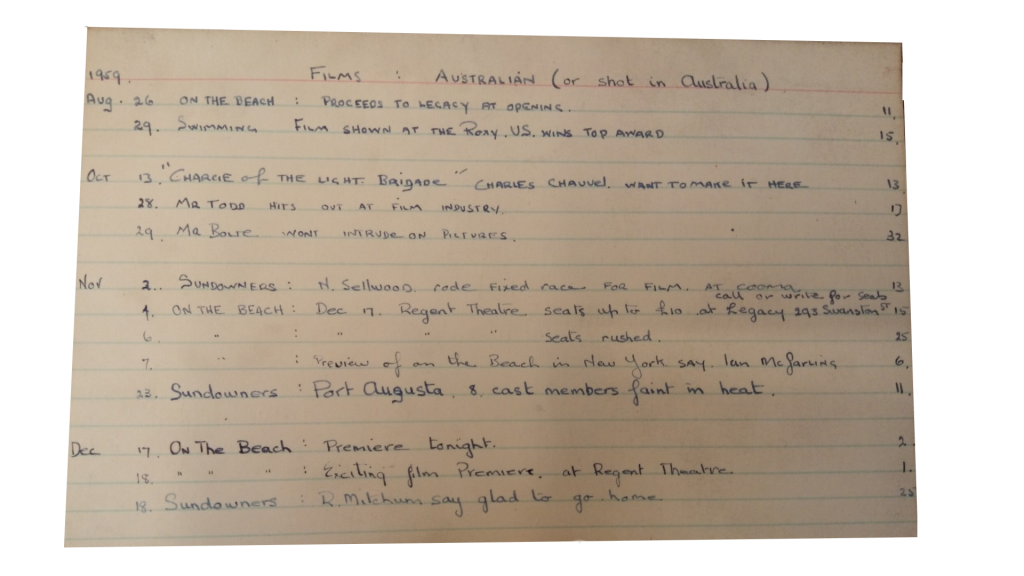
Using the cards nowadays is often an interesting experience. The cards can be difficult to read (depending on the hand-writing used at the time). and the organisation under certain subject headings can seem arbitrary. Sometimes it is easy to find what you need, other times not so much. There is no doubt, however, that some otherwise very hard to find information can be gleaned if you persist with the indexes.
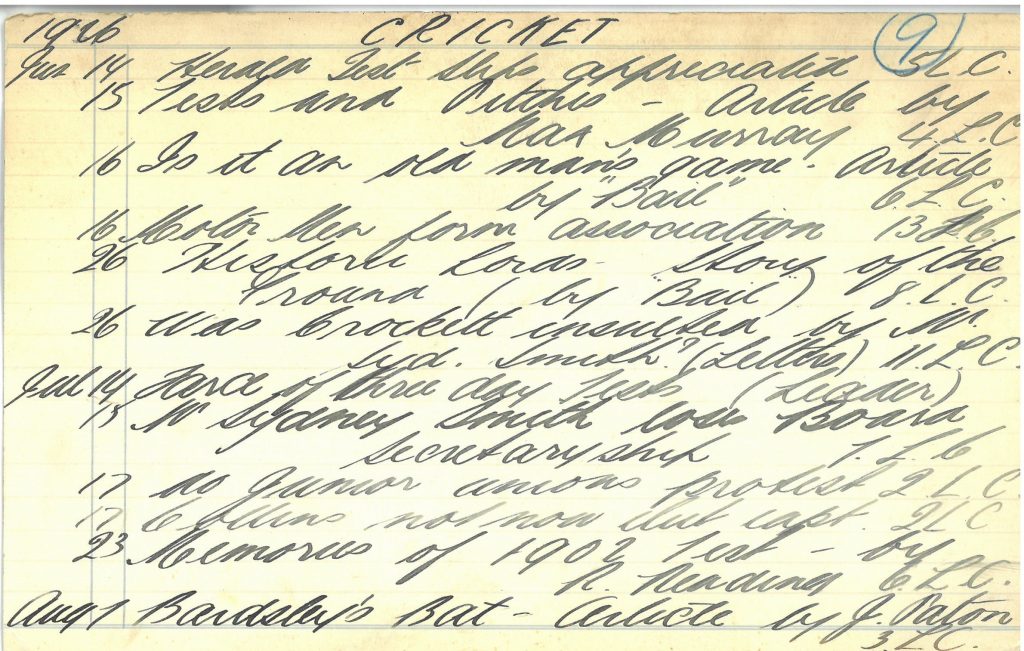

Though this old library technology can be frustrating to use and searching it can be a fruitless exercise (I include myself and other librarians in this), my own experience with the cards has been positive. I have been asked numerous questions by library users to find out information from the late 1950s to the early 1990s and by using the card catalogue was able to locate obscure information relating to court sheriffs, competition winners, and ordinary folks appearing once in the newspaper. Without the cards these questions would have gone unanswered and stories untold.
So if you are ever at a research dead end, don’t forget to check the humble newspaper index cards, located at the State Library Victoria’s Newspapers and Family History Reading Rooms. They might just have the information you need!
I wish to thank Angela O’Connor, Maria Paget, and Anthony Gionfriddo for their reflections regarding employment at the newspapers and their libraries. This provided me with background information, assisting with this blog and associated video.
More to explore
State Library Victoria Research Guides:
How to find newspapers
How to find items in newspapers


This is all fascinating information. It’s great that a young contemporary librarian sees its value. It makes me want to take up residence in the SLV just to read the old card files!